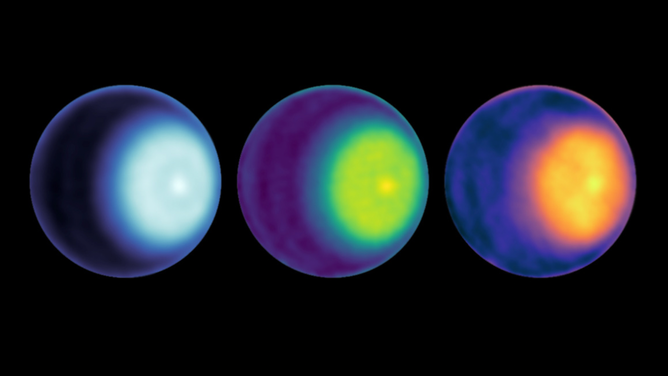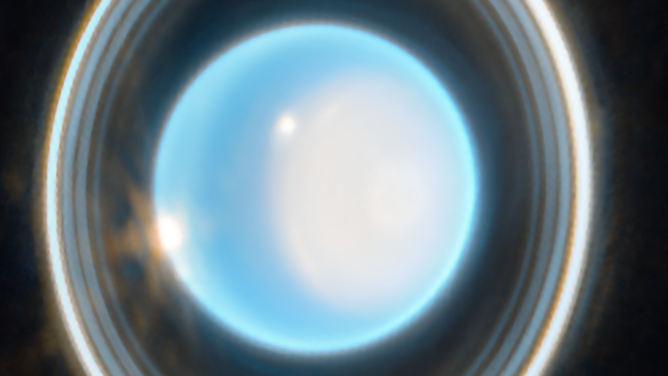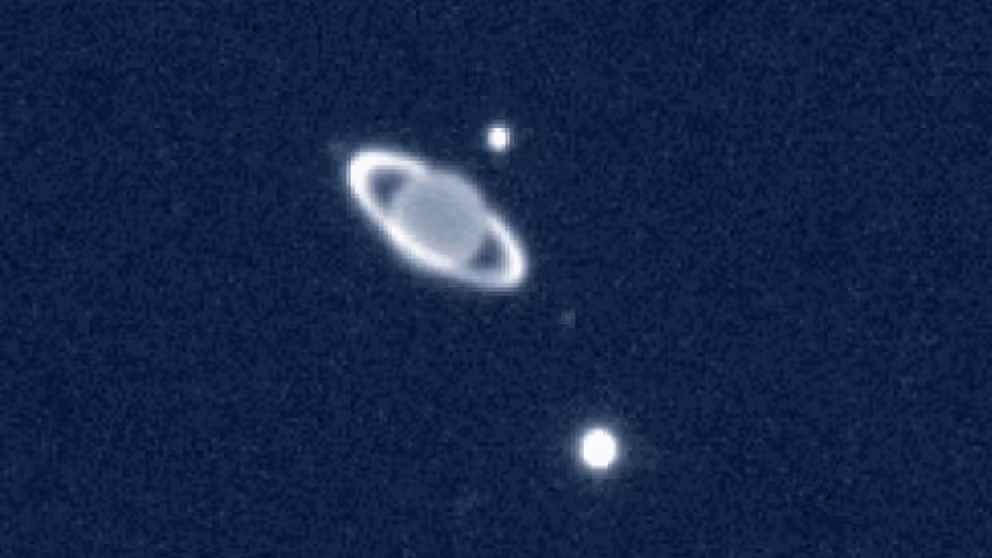Polar cyclone detected on Uranus for the first time
NASA's findings of Uranus' polar cyclone confirm that all planets with substantial atmospheres in our solar system have a swirling vortex at the poles, according to the agency.
Discovering Uranus
Uranus was discovered 241 years ago.
A polar cyclone has been detected on the north pole of Uranus, NASA announced Tuesday, further confirming that all planets with substantial atmospheres in our solar system, whether made from rock or gas, have a swirling vortex at the poles.
NASA scientists discovered Uranus’ polar cyclone by examining radio waves emitted from the planet. Collected in 2015, 2021 and 2022, the data allowed scientists to look deeper into the planet’s atmosphere.
They could look below the clouds of the gaseous ice giant and see that the circulating air at the north pole seemed warmer and drier. According to NASA, such characteristics are the hallmarks of a strong cyclone with a core of warm, dry air.

NASA scientists used microwave observations to spot the first polar cyclone on Uranus, seen here as a light-colored dot to the right of center in each image of the planet. The images use wavelength bands K, Ka, and Q, from left. To highlight cyclone features, a different color map was used for each.
(NASA / JPL-Caltech / VLA / FOX Weather)
"These observations tell us a lot more about the story of Uranus. It’s a much more dynamic world than you might think," said Alex Akins, lead author at NASA’s Jet Propulsion Laboratory in southern California. "It isn’t just a plain blue ball of gas. There’s a lot happening under the hood."
On Earth, cyclones like hurricanes form over warm liquid water. However, the cyclone discovered on Uranus and other extraterrestrial cyclones do not form over liquid water. Plus, the cyclones remain locked at the poles, while Earth's hurricanes drift.

This zoomed-in image of Uranus, captured by Webb’s Near-Infrared Camera (NIRCam) Feb. 6, 2023, reveals stunning views of the planet’s rings.
(SCIENCE: NASA, ESA, CSA, STScI / IMAGE PROCESSING: Joseph DePasquale (STScI) / NASA)
The discovery of a polar cyclone ushers in many questions about the atmosphere on Uranus. According to Akins, one of those questions may involve the possibility of stacked cyclones.
"The fact that we’re still finding out such simple things about how Uranus’ atmosphere works really gets me excited to find out more about this mysterious planet," he said.
NEW NASA IMAGE SHOWS DRAMATIC RINGS, MOONS AROUND PLANET URANUS
These findings add to the canon of discoveries of similar storms on most of the other planets in the solar system.
Every planet apart from Mercury, which has no substantial atmosphere, has cyclones and anti-cyclones at their poles, NASA said. Cyclones rotate in the same direction a planet rotates, while anti-cyclones rotate in the opposite direction.
